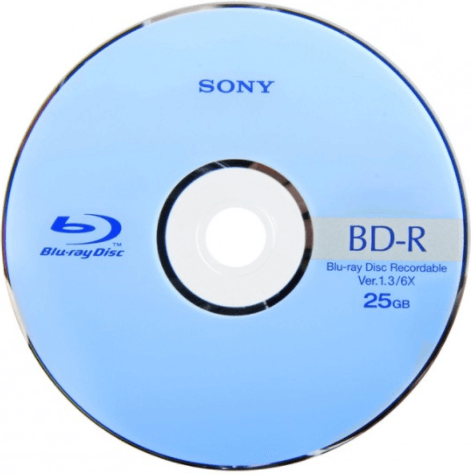What is BD-R (Blu-ray Disc Recordable)? If you want to get some information about it, then this post is what you need because MiniTool has introduced BD-R’s definition, recording mechanisms.
What Is BD-R?
What is BD-R? It is short for Blu-ray Disc Recordable, which is a Blu-ray disc that can have data written to it only once. Blu-ray Disc Recordable Erasable (BD-RE) is the subcategory of BD-R, and it can be recorded and erased as many times as needed. The minimum write speed of Blu-ray Discs is 36 megabits (4.5 megabytes) per second.

As the name suggests, both types of optical discs are based on Blu-ray technology, and their storage capacity is much higher than conventional compact discs (CDs). The capacity of single-layer discs is 25 GB, the capacity of double-layer discs is 50 GB, the capacity of triple-layer discs is 100 GB (“XL”), and the capacity of quadruple-layer discs is 128 GB (only on BD- R).
The capacity of BD-R ranges from 25 GB to 128 GB, but BD-R is still more expensive than other forms of recordable media (such as CD-R, and DVD-R), so they are usually only used when high data capacity is required.
Blu-ray technology entered the market in the mid-2000s and gradually began to be accepted as a standard storage solution for high-quality audio and video. As of April 2018, there are five versions of Blu-ray Disc Recordable Erasable (BD-RE) and four versions of Blu-ray Disc Recordable (BD-R).
Recording Mechanisms of BD-R
BD-R and RE discs have grooves whose wobble frequency can be used to locate the position of the reading or writing laser on the disc, instead of the pits and lands found on prepressed/prerecorded/replicated discs. BD-R has an Optimum Power Calibrations (OPC)/Test Zone for calibrating (finely adjust) the power of the writing laser before and during writing, and a Drive Calibration Zone on the outer edge of the disc for optional high-speed calibration.
Calibration must be performed to allow minor manufacturing defects, greatly reducing or eliminating rejected discs and drives, reducing costs and eliminating potential waste. The following information describes the different types of recording layers that can be used on BD-R and BD-RE discs.
HTL (High to Low)
“Normal” BD-R discs adopt a composite material (or phase-changing alloy in the case of BD-RE), which reduces the reflectivity during recording, that is, “High to Low”. Melting the material with a very high power beam will change it to an amorphous state with low reflectivity, and heating it with lower power will change it back to a crystalline state with high reflectivity.
In BD-RE discs, the data layers are surrounded by a pair of dielectric Zinc Sulfur-Silicon Dioxide layers. Adhesive spacer layers and semi-reflective layers are used for multilayer discs. The recording layers and the dielectric layers are all deposited by sputtering.
On multi-layer BD-RE discs, each GeSbTe recording layer is getting thinner and thinner. Therefore, the thickness of the first layer (L0) is 10nm, the thickness of L1 is 7.5nm, the thickness of L2 is 6nm, and so on.
The silver alloy reflective layers behind each recording layer also gradually become thinner, so the thickness of the L0 silver layer is 10nm, the thickness of the L1 layer is 9nm, the thickness of the L2 layer is 7nm, and so on. The separation layer that separates the recording layers from each other also gradually becomes thinner.
BD-R LTH (Low to High)
BD-R LTH is a write-once Blu-ray Disc format with an organic dye recording layer. “Low to High” means the change in reflectivity from low to high during the burning process, which is the opposite of ordinary Blu-rays, which changes from high to low during the writing process.
The advantage of BD-R LTH is that it can protect the manufacturer’s investment in DVD-R/CD-R manufacturing equipment because it does not need investment in new production lines and manufacturing equipment. On the contrary, the manufacturer only needs to modify the current equipment. It is expected that this will reduce the cost of disc manufacturing.
Old Blu-ray players and recorders cannot use BD-R LTH, but firmware upgrades can allow the device to access BD-R LTH. Panasonic released firmware updates for DMR-BW200, DMR-BR100, and MR-BW900/BW800/BW700 models in November 2007. Pioneer was expected to deliver the first batch of LTH BD drives in the spring of 2008. Sony upgraded the PlayStation 3 firmware in March 2008 to make BD-R LTH reading possible.
In 2011, France’s Ministry of Culture and Communication conducted a study on the applicability of LTH (low to high) discs and HTL (high to low) discs for data archiving. The data they collected showed that the overall quality of LTH discs is worse than that of HTL discs.
User Comments :